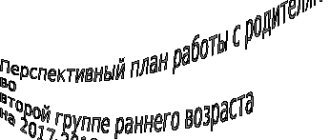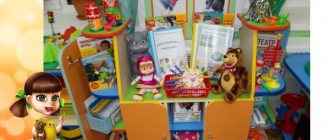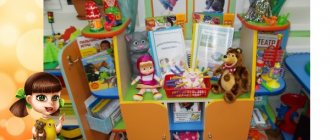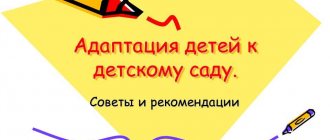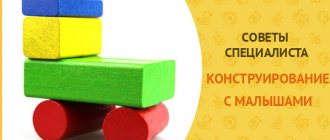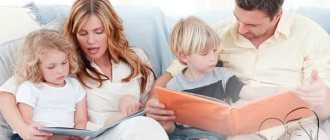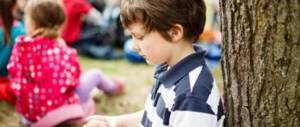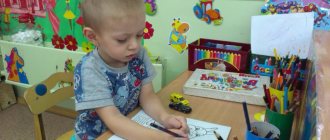Hello everyone, dear visitors of my blog and friends! I’m with you again, Tatyana Sukhikh! Agree that young children tend to ask a lot of questions every day. Mom and dad must explain why the sun is shining, why the tractor is moving, why the grass is green, and so on. Explaining yourself in a way that a child can understand is quite a difficult task. It is more effective to show everything in practice. This is exactly what children do in preschool educational institutions: the experimental corner is the best solution for answering many questions.
Basics of organizing a corner in a preschool educational institution
The following books can help teachers organize this activity in kindergarten: https://www.uchmag.ru/estore/e283698/?s=8157&partner=61, https://www.uchmag.ru/estore/e558680/?s=8162&partner =61, is a system that opens up educational and research activities in the experimental laboratory of the Federal State Educational Standard of Education, here are presented problem situations in game forms, a card index of experiments, https://www.uchmag.ru/estore/e125171/?s=17&partner=61 , - organizational events for children aged from two to seven years.
What do you think is the significance of children's experimentation?—It is colossal. The technique allows you to significantly expand your thinking, correctly establish cause and effect, develop logical thinking, teach attention, help draw conclusions, and adhere to safety precautions.
To create an exploratory play corner, you need to use different items:
- natural ingredients: sand, stones, leaves, shells;
- food products: granulated sugar, salt, flour;
- books and various educational publications;
- devices for carrying out various experiments and carrying out experiments: magnifying glasses, needles, test tubes, scales, rubber balls and much more;
- various materials, paper, fabrics are used;
- paints, food colorings;
- various tables and schematic algorithms.
It is important to properly design such a corner in the garden. For example, there should be a convenient place for games and educational lessons. Children must have a place to conduct experiments, store materials, and scientific literature.
The level of development of the baby and his age must be taken into account, and safety precautions and sanitation standards must be observed.
Requirements for the contents of the corner
The design of the experimental corner in the kindergarten is drawn up in accordance with the Federal State Educational Standard.
Standards
According to the Federal State Educational Standard, the experimentation corner must have the following characteristics:
- proper location (lighting, availability of free space);
- accessibility (children are given the opportunity to take the materials necessary for the experiment);
- safety (safety precautions must be discussed, there must be appropriate visual information, the corner must be designed safely).
Experimentation Corner Passport
The teacher is responsible for preparing a passport for the experimental corner. It should contain parameters of equipment, location, filling, decoration, factors in the development of the child’s exploratory behavior should be taken into account, experiments should be described in detail. Also, the passport must contain the goals and objectives of the circle, the forms of its implementation, as well as the exercises and experiments that are carried out in it.
For your information . The passport contains the following data on a mandatory basis: name, group number and age of the children in it, goals and objectives, furnished equipment, material resources, didactic materials, database of experiments.
Name
The chosen name must be close and understandable to children. It should be associated with positive emotions. For kids, it is recommended to choose names related to their favorite characters, for older children - with scientific themes.
Formation of cultural and hygienic skills in the senior group
For your information . It is best to give children the opportunity to choose the name for the experimental corner on their own. The classic names are the following: “I want to know everything!”, “Znayka”, “Poznavaika” and others.
The corner develops children
Design tools
Visual materials must be present in the design of the experimental corner. These can be posters, devices, information stands, presentations, books and any other information materials.
Experimentation corner in the younger group
The characteristics of various objects is the most accessible and educational area.
What is needed to complete a preschool educational institution for the little ones? How do you think? It is very useful to work with bulk natural materials. Teachers often give children tasks to extract pumpkin or sunflower seeds, analyze the differences between different seeds, and show where they are shown in the photo.
Have you noticed how children love to make Easter cakes in sandboxes? By the way, such an activity helps them develop observation skills, allows children to understand how to work with this material, and develops motor skills.
Exercises in which children are asked questions about tastes are very effective. For example, what kind of semolina porridge: sweet or salty? Which salt to taste and which sugar?
Experiments in the middle group with sand
The experimentation corner in the middle group should be convenient for conducting experiments with sand. Classes introduce children to the properties of sand, its origin, develop perseverance, attention, and fine motor skills. Children can touch the sand, pour it from container to container, examine it through a magnifying glass, mix it with water, or drop it to the bottom of a jar of water.
All children love experiments with different objects. Therefore, considerable time should be allocated for experimentation in the middle group!
Working with middle school children
At this age, children have already worked a lot with sand and other bulk materials, and therefore it is important to reach a new level of development. It allows the child to develop a sense of time. In this case, the same sand is used, only in an hourglass.
Children really like to watch how they did something, and after some time the result of their work will be visible. In this case, teachers use an experiment with seed germination, when sunflower or pea seeds are placed in a bowl under wet gauze, and after some time they germinate.
In summer, the practice of planting peas in the ground outside is very useful. After this, conscientious workers will be curious to observe what has grown in the beds.
With the help of mirrors, the children launch bunnies, which really captivates them. Illustrations from books will help complement the story about the sun and solar system.
Design of the experimentation corner
The Federal State Educational Standard recommends that the teacher support the initiative of the preschooler and encourage the manifestation of independent thinking. A properly organized corner for experiments is a great help in this.
The Experimentation Center solves important problems:
- Forms a positive orientation towards research activities.
- Promotes the establishment of camaraderie among classmates.
- Increases interest in group activities.
- Develops the ability to listen, understand a task and carry out assignments.
- Develops perseverance, accuracy and responsibility.
Experiments develop thinking in children
The experimentation area is located away from places for noisy active games. It should be quiet and peaceful here. The design can be classic (tables, chairs, a set of materials for experiments) or stylized as a scientific laboratory or research center.
Classes on traffic rules in the 2nd junior groups of kindergartens
Important. You can decorate a corner using characters from your favorite cartoons and TV series (“Luntik’s Laboratory”, “Visiting the Fixies” or “Doctor Chudakov’s Experimentarium”).
Experimentation Corner Passport
Each research corner must have a passport. The document indicates where this mini-laboratory is located, what materials are stored, how it is decorated and how it is decorated. Goals, objectives and forms of work are outlined, game experiments, research and practical exercises are prescribed.
The passport contains the following information:
- Name;
- group, age;
- goals and objectives;
- furniture;
- a set of materials, tools, devices, their quantitative characteristics;
- didactic material (posters, observation diaries, tables, diagrams);
- card index of experiments.
What should be in the corner
The corner should be comfortable, well-lit, accessible and safe for children. In the children's mini-laboratory of the second junior group there are:
- Didactic materials (books with bright illustrations, reference books, encyclopedias), thematic albums, sets for educational games (large construction sets, cubes, complexes for playing with sand and water).
- Natural and available materials (cones, pieces of wood, acorns, colorful caps, sticks, large buttons, spools of thread, fabrics), sand, clay, sugar, salt, paint, soap, cotton pads.
- Containers (basins, cups of different sizes, ice trays) and available tools (scoops, rakes, spoons, sieve, nets).
- Instruments (wind spinners, magnifying glasses, small mirrors, shadow figures, multi-colored lenses, steelyard, binoculars).
The experimentation corner at the preschool educational institution is very useful
Information is posted on stands. Experiments are carried out on a demonstration table or in a work area. Video presentations are viewed on a projector.
Experiments in the preparatory group
At this age, kids are already experienced experimenters, but despite this, they never cease to be interested in the world around them and learn something new. Surely many mothers will agree with me on this. So what should you do in this case? We need to help the baby develop in every possible way.
Elementary experiments that are very captivating for preschoolers will help with this. Preschoolers really like experiments with iodine and starch and cause them real delight. To do this, take a potato, cut it and apply a drop of iodine on it, after which you need to explain to the child that it turned blue due to the starch contained in it.
Ant farms in preschool educational institutions are another interesting research discovery. Children love to watch whole colonies of working ants.
So, my dears! As you already understand, the experimentation corner is an important component in kindergartens, which helps children develop, makes them creative individuals, creates a good foundation for intellectual potential, develops logic, and teaches analysis.
You can also work with your children on your own at home. Take part in offline webinars https://www.uchmag.ru/estore/e300815/?s=8889&partner=61, https://www.uchmag.ru/estore/e355329/?s=8889&partner=61, because it’s true fun and interesting! Follow my blog updates and you will learn a lot more useful information, share the news on social networks and see you again, friends!
Sincerely, Tatyana Sukhikh! Till tomorrow!
By the way, I recommend reading:
Experimental activities in the second junior group
From the age of 2-3, pupils of the younger group begin to participate in experiments and projects in the group and on walks. Together with the teacher, they conduct simple research that lays the foundation for future cognitive activity.
Child development is important
The need for the development of cognitive activity in children 3-4 years old
By the age of 3-4 years, preschool children of the middle group clearly feel their own personality. They want to be independent, learn about the world, and discover new things. The most effective way of learning is experiment. At an early age it is the main way of understanding life.
Important. Without visual experience, abstract concepts remain an illusion. Only practical observations help the child model the picture in his mind, establish relationships and patterns.
Forms of training according to Federal State Educational Standards
In accordance with the requirements of the Federal State Education Standard (FSES), preschool teachers are recommended to daily simulate situations that stimulate the cognitive activity of kindergarteners and study information cards.
Forms of development of research activity of preschool children:
- experiment;
- search activities and research;
- collecting;
- design.
Experimental classes in the second junior group are based on a competent combination of forms and methods.
Kids also experiment during walks
Experimental safety
Experimentation in the younger group takes place under the strict supervision of the teacher. This is a necessary condition for the safety of young researchers.
For your information. A child at this age is characterized by enthusiasm. Experience can overwhelm him and make him forget about caution. Therefore, an adult should monitor the process, especially in early spring and summer.
The rules of safe behavior are simple:
- All manipulations should be carried out slowly, without throwing or splashing materials.
- Do not push anything into your mouth, nose, ears, or rub your eyes with dirty hands.
- The workplace must be in order.
- Experimental equipment (microscope, mirror, alcohol lamp, glassware) must be handled with care and operated only under the guidance of adults.
Regular classes will help children remember the rules of safe behavior.
